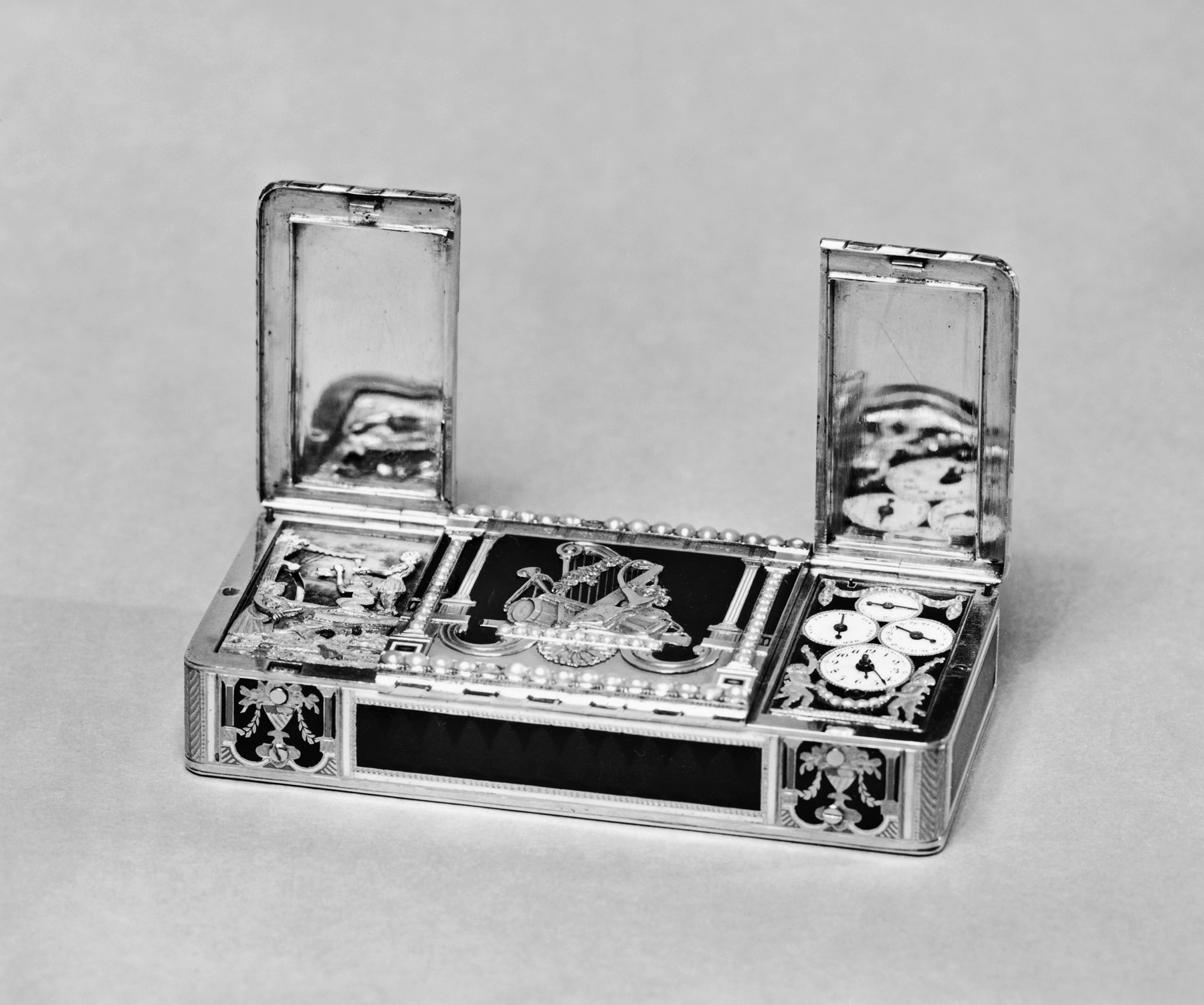Snuffbox with Calendar Clock and Music Box
(18th and 19th Centuries )
Originating in the Americas, the practice of “taking snuff,” or inhaling pulverized tobacco through the nose, became a common European custom by the 17th century. Consumers of all social levels and of both sexes would carry small, airtight boxes filled with the powdered tobacco, taking a pinch whenever they needed. Over time, however, society’s elites began to purchase and commission increasingly extravagant and precious boxes. Kings and Queens would often present snuffboxes to ambassadors as diplomatic gifts and to courtiers as payment for services. Made of a variety of precious materials, including gold, enamel, semiprecious stones, lacquer, and tortoiseshell, snuffboxes were coveted and enthusiastically collected. Displaying one’s collection of prized snuffboxes or stylishly retrieving an elegant box from one’s pocket were important social rituals; these objects revealed a person’s tastes, interests, and erudition. This is a particularly special snuffbox, as it features a compartment for snuff, a calendar watch, and a music box. To the left of the central compartment, which features a relief of musical instruments, is the mechanized music box that, when open, reveals a man pumping water, a girl filling a cup, and a woman calling her chickens. To the right of the central snuff compartment, is a clock with four dials: one indicating hour of the day, one revealing the days of the week, one reporting the day of the month, and one that tracks seconds.
Inscription
Provenance
Provenance (from the French provenir, 'to come from/forth') is the chronology of the ownership, custody, or location of a historical object. Learn more about provenance at the Walters.
Henry Walters, Baltimore [date and mode of acquisition unknown]; Walters Art Museum, 1931, by bequest.
Exhibitions
| 1984 | Objects of Vertu: Precious Works of the Eighteenth Century. The Walters Art Gallery, Baltimore. |
Conservation
| Date | Description | Narrative |
|---|---|---|
| 3/27/1962 | Treatment | loss compensation |
Geographies
Switzerland, Geneva (Place of Origin)
Measurements
6 11/16 x 34 1/4 in. (17 x 87 cm)
Credit Line
Acquired by Henry Walters
Location in Museum
Not on view
Accession Number
In libraries, galleries, museums, and archives, an accession number is a unique identifier assigned to each object in the collection.
In libraries, galleries, museums, and archives, an accession number is a unique identifier assigned to each object in the collection.
57.214


